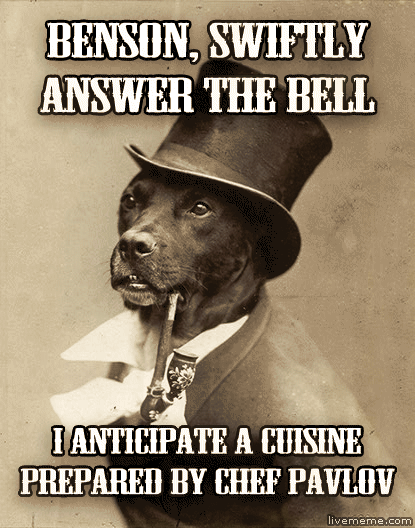Fetch.
It sounds like the most trivial game you can play with your dog. It’s one of the first things you teach him how to do (right after “sit”, “stay”, and “don’t crap on the floor”), and seemingly the simplest activity that can keep him entertained for ages. But where does it come from? How is it that your dog innately knows to go get a ball that you throw, to look where you point, or to respond to your expressions and emotions?

“Evolution from wolves” sounds like an easy answer, until we consider a couple facts.
Brian Hare (Duke professor) and Vanessa Woods (research scientist) explain that for wolves to evolve into dogs was a huge feat. What people have to remember is that before civilization was cozy or boring, early man had to struggle to survive. Having a furry novelty companion (much less accessory) was likely the last thing on the Homo-erectus to do list. So that means, wolves had to make the first move.
But how?
Our distant ancestors actually had a big problem with the wolf and would kill off the ones who were super aggressive or posed a threat. Thus, as civilizations expanded, a hungry wolf who hoped to avoid ending up dinner had to be bold enough to approach a human, but friendly enough to avoid ending up being dinner himself.

Seeing as evolution in the wild means “survival of the fittest”, a new breed of wolf that would be welcome among humans, was going to call for a new breed of evolution as well: “survival of the friendliest”. Interestingly enough, these wolf-dogs eventually even had a distinct phenotype of splotchy coats and floppy ears.
Soon, generations of “protodogs” would show psychological differences from their predecessors. Dogs intelligent enough to read our gestures would be kept around to help hunt, fetch items, and (in dire times as a last resort) serve as emergency food themselves if man was starving. Seeing how beneficial this new type of wolf-dog was, caused humans to keep them around for sake of convenience… and eventually companionship.
Although the “wolf approaching man first” theory of Hare and Woods makes a great deal of sense, one can’t help but wonder if their actual motive wasn’t so much because a “bunch of aggressive wolves nosing around the settlements got picked off, leaving only the nice ones”, so much as being opportunistic.

Rather, I tend to think that perhaps it occurred more naturally. If a bunch of wolves are in the wild, doing “wolf things”, and a splotchy coated, floppy eared, submissive aberration is randomly born, he’s going to eventually seek out the humans anyway for one of two reasons: The wolves might ostracize him for being different, or because said wolf-dog was born with the more docile trait, he’s going to have a hard time procuring food over his cutthroat brothers when they all hone in on the gazelle they’ve sniped for supper.
That’s when he branches off to look for food elsewhere, and (as a last resort), approaches man, hoping for two things: 1. That man recognizes his splotchy coat, floppy ears, wagging tail, and other signs of submission, and 2. That those things will actually mean something to him; and that he’ll be equally friendly, welcoming, or feed the dog – and I don’t mean to his own human family.
The latter part of the theory about the “not fitting in” is just an unconfirmed personal thought; but it’s one that makes sense, nonetheless. Either way, wolf-dogs may have sought us out, but our evolution intertwined from that point on, as the dynamic itself had to evolve. The idea that it wasn’t just we who domesticated them, but also they who also softened us (and possibly even contributed to building our civilizations) makes it an even more fascinating “tail”.
So, the moral of the story is that that’s why you’re a horrible person if you don’t love a dog; it means you don’t even have the empathy level of a primitive caveman.
Have a good day!
xoxo
<3~A